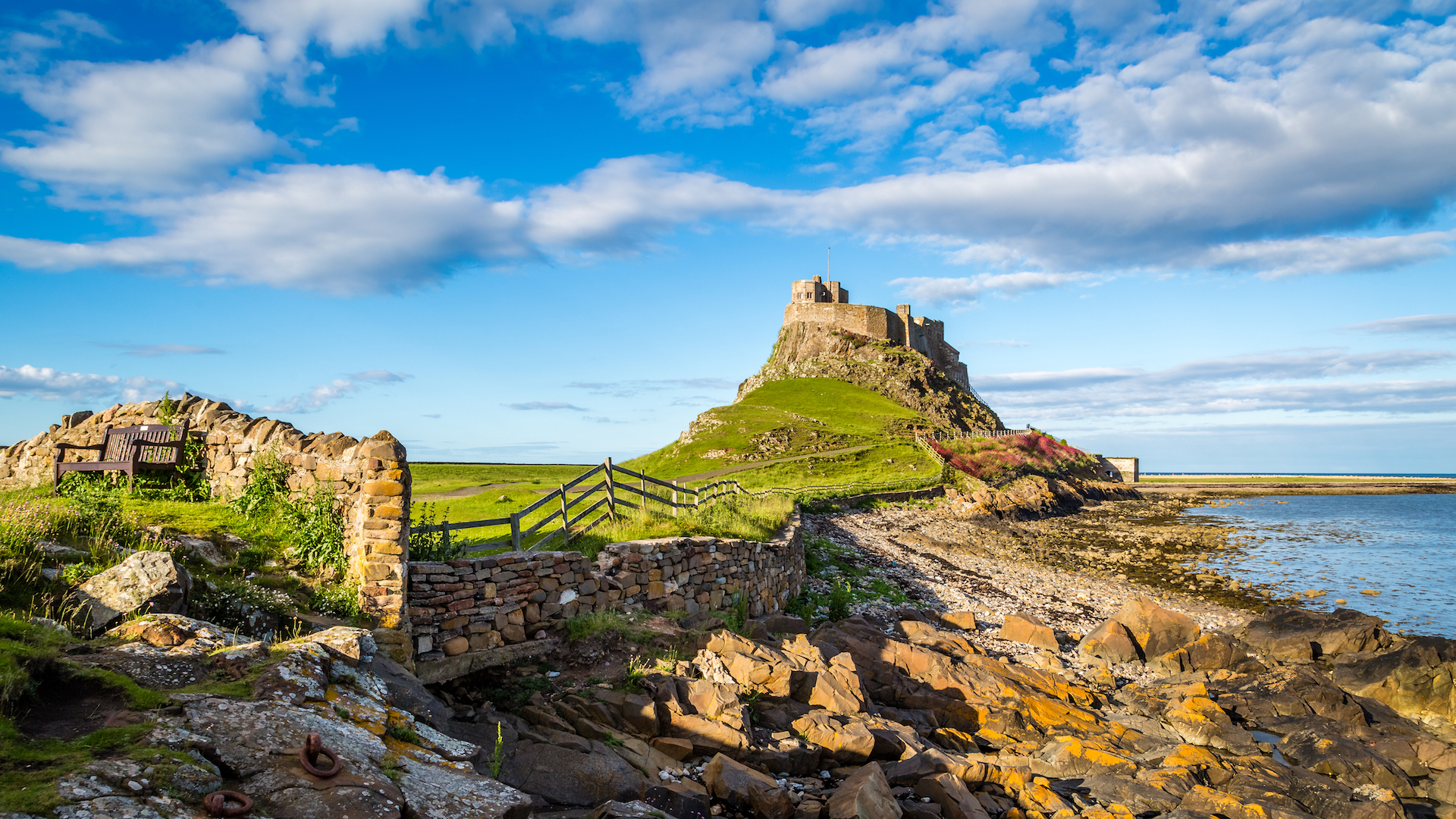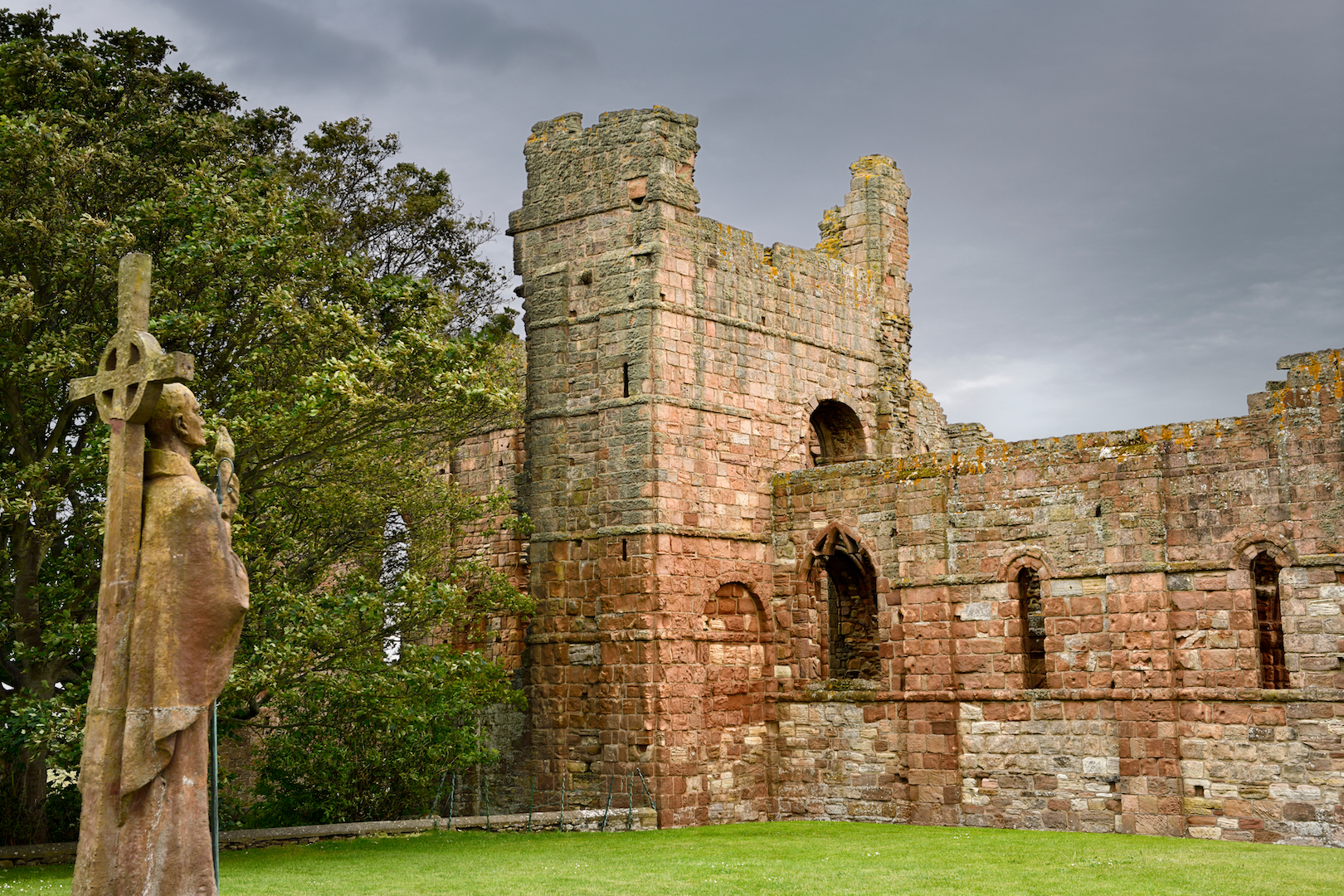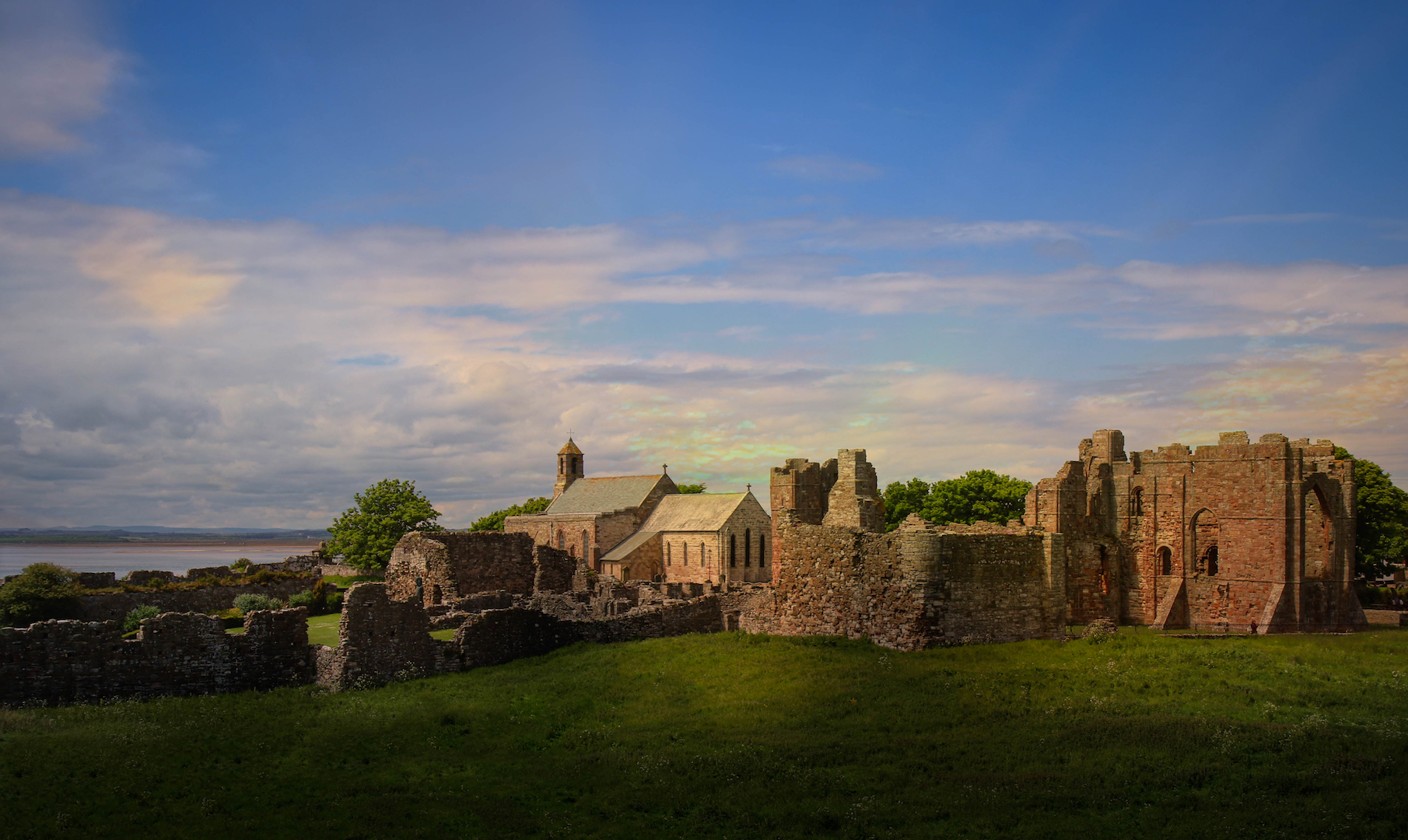Lindisfarne: The 'Holy Island' where Vikings spilled the 'blood of saints'
Reference article: Facts about Lindisfarne.

Lindisfarne (also known as "Holy Island") is a tidal island located off the east coast of the United Kingdom. It's known for a Christian monastery founded in the 7th century that suffered a Viking raid so terrible that some medieval writers believed that God was punishing them for their sins.
For part of the day, Lindisfarne is connected with the U.K. mainland, but when the tide comes in, Lindisfarne becomes an island. Visitors to Lindisfarne have to be careful to cross between the two land masses before the tide comes in.
Today the island's history and natural beauty attracts hundreds of thousands of visitors a year. Lindisfarne is "full of surprises and contrasts: a place of peace where there have been battles and slaughter; a place of holiness and sanctuary that has been invaded more than once and well-nigh destroyed; a place with a small population that hosts almost half a million visitors a year," wrote David Adam, a priest who was the vicar for Lindisfarne for 13 years, in his book "The Holy Island of Lindisfarne" (Morehouse Publishing, 2009).
Founding of the monastery
Historical records say that the monastery at Lindisfarne was founded by a monk named Aidan in A.D. 635. At the time, Lindisfarne was controlled by a king named Oswald. While Oswald was a Christian some of his subjects were not, and Aidan's goal was to convert them.
The monastery that Aidan founded had numerous leaders over the centuries, a number of whom became saints. "It certainly seems to have more saints per square metre than you can find almost anywhere else," Adam wrote.
Related: Photos: Remains of ancient monastery in Israel
While little remains of the monastery's 7th century structures, archaeological work reveals that the island's topography changed dramatically around the time that the monastery was founded. Pollen analysis shows that the woodland, which had previously covered much of the island, began to vanish. An artificial lake (today called the "Lough") was built at the time the monastery was founded. It may have been used as a fish pond by the monks.
St. Cuthbert
St. Cuthbert (A.D. 634-687) is one of Lindisfarne's most well-known saints, having developed something of a cult following among medieval Christians. The monk St. Bede (A.D. 672-735) wrote that St. Cuthbert "laboured far and wide to convert the people dwelling round about from the life of foolish custom, to the love of heavenly joys…." (translation from the book "Bede's Ecclesiastical History of England: A Revised Translation With Introduction, Life, and Notes" by A. M. Sellar, George Bell and Sons, 1907).
A number of miracles were attributed to St. Cuthbert during his life. One story, for example, tells of otters that would come out of the sea, walk to St. Cuthbert and warm his feet when he was praying.
Related: 12 bizarre medieval trends
In A.D. 698, Cuthbert's body was exhumed by the monastery's monks so that it could be reburied. Bede wrote that the body had not decayed at all. "When they opened the grave they found the body whole and incorrupt … the brothers were awestruck, and hastened to inform the bishop of their discovery," Bede wrote. The brothers then "clothed the body in fresh garments, they laid it in a new coffin which they placed on the floor of the sanctuary" (translation from the book "The Lindisfarne Gospels: Society, Spirituality and the Scribe, Volume 1" by Michelle Brown, British Library, 2003).
Wealthy monks?
Artifacts from Lindisfarne indicate that the monks enjoyed material wealth. The Lindisfarne Gospels, a text that contains the canonical Christian Gospels, is decorated with colorful illustrations and was written on fine sheets of cattle hide (leather). A colophon says that the texts were copied by St. Eadfrith, who was bishop of Lindisfarne between A.D. 698-721. How much it cost to produce the Gospels is unknown but scholars agree that it would have been substantial.
Another artifact that shows the wealth of the people at Lindisfarne is a recently discovered 1,200 year-old game piece that is decorated with a blue "gumdrop" color. It may have been brought to Lindisfarne by a wealthy visitor.

Viking attack
In A.D. 793, the Vikings attacked Lindisfarne, looting the monastery and killing or enslaving many of the monks. It was the first time the Vikings had attacked a monastic site in Britain, and the attack came as a major shock for medieval Christians.
"The pagans have desecrated God's sanctuary, shed the blood of saints around the altar, laid waste the house of our hope and trampled the bodies of the saints like dung on the street," wrote the priest Alcuin (A.D. 735-804) in a letter addressed to Higbald, who was bishop of Lindisfarne at the time the attack happened (translation from the book "Alcuin of York: His Life and Letters" by Stephen Allott, William Session Limited, 1974).
The Anglo-Saxon Chronicle (a record of events) claimed that dragons were seen flying around Northumbria (the area of Britain where Lindisfarne is located) before the attack happened.
"This year came dreadful fore-warnings over the land of the Northumbrians, terrifying the people most woefully: these were immense sheets of light rushing through the air, and whirlwinds, and fiery dragons flying across the firmament. These tremendous tokens were soon followed by a great famine: and not long after, on the sixth day before the ides of January in the same year, the harrowing inroads of heathen men made lamentable havoc in the church of God in Holy-island, by rapine and slaughter…," the chronicle entry said (translated by James Ingram in 1823).
Alcuin believed that God was punishing the monks at Lindisfarne for an unknown sin. The attack "has not happened by chance, but is the sign of some great guilt," Alcuin wrote in the letter to Bishop Higbald, going on to encourage the surviving monks to not wear fancy clothes, not drink, pray often, keep faith in God and not have sex.
The attack on Lindisfarne was only the beginning. Viking raids increased in Britain in following years and eventually entire Viking armies landed in Britain, conquering parts of the country. As the Vikings attacked other monastic sites, Alcuin kept writing letters encouraging priests and monks in Britain not to flee from the Vikings.
After the attack on Lindisfarne, the body of St. Cuthbert, along with other relics and artifacts, were moved to locations that the Vikings would have a hard time reaching. St. Cuthbert's body was relocated a few times, eventually being brought to Durham Cathedral in Durham, England, where it is buried today.
The Viking attack on the monastery is depicted in a stone found at Lindisfarne. Analysis of artifacts found at Lindisfarne indicate that despite the Viking attack, the monastery remained open, although fewer monks may have lived there.

Later times
Lindisfarne recovered from the Viking attack but came under a new threat — environmental change. A team of scientists noted in a paper published in the book "Ecological Relations in Historical Times" (Blackwell, 1995), that a series of sand dunes started forming around the northern part of Lindisfarne around A.D. 1400, eventually covering a settlement called "Green Shiel" and the agricultural land beside it.
The change in landscape changed the way the Lindisfarne monks earned money, the scientists wrote. They noted that historical records indicate that the Lindisfarne monks relied less on agricultural produce and rents collected from tenant farmers and instead got into the shipping business, buying ships and transporting goods in an attempt to make money. The monks also raised rabbits and hired fishermen to fish for them, the records show.
The monastery was closed in the 16th century and Lindisfarne was used as a military base with a fort sometimes called "Lindisfarne castle." The fort gradually fell out of use and was converted into a residence between 1903-1906. Today, the fort, remains of the monastery and several churches that are still in use today, are all major tourist draws on the island.
Additional resources:
- Learn more about the Lindisfarne Gospels from the British Library.
- Read about recent research into Viking trade.
- Discover new findings about a Viking female warrior.
Sign up for the Live Science daily newsletter now
Get the world’s most fascinating discoveries delivered straight to your inbox.

Owen Jarus is a regular contributor to Live Science who writes about archaeology and humans' past. He has also written for The Independent (UK), The Canadian Press (CP) and The Associated Press (AP), among others. Owen has a bachelor of arts degree from the University of Toronto and a journalism degree from Ryerson University.










